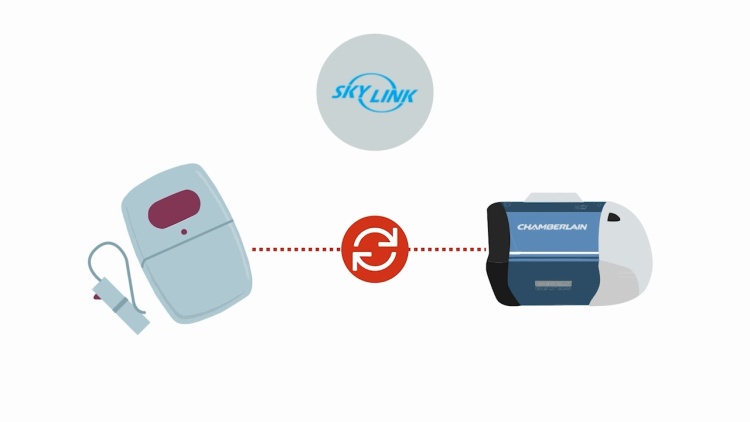Chamberlain Group, Inc. v. Skylink Technologies, Inc.
United States Court of Appeals for the Federal Circuit
381 F.3d 1178 (2004)

- Written by Cynthia (Anderson) Beeler, JD
Facts
Garage-door openers (GDOs) include a device mounted on the garage door that enables the door to open electronically, along with a handheld transmitter for opening the door. Homeowners can also purchase additional, or replace existing, handheld transmitters aftermarket. GDOs use a code that syncs the transmitter and the mounted device. Universal transmitters enable users to program an aftermarket transmitter for use with any GDO system or mounted device. Chamberlain Group, Incorporated (Chamberlain) (plaintiff) owned a copyright-protected product line of GDOs called the Security+ line (Security+). Security+ incorporated a copyright-protected rolling-code program that changed the signal between the transmitter and the mounted device. Skylink Technologies, Incorporated (Skylink) (defendant) sold a universal transmitter called the Model 39 transmitter (the Model 39) that allowed users to sync the Model 39 to Security+, although the Model 39 did not actually use the copyright-protected rolling code from Security+. Chamberlain sued Skylink under 17 U.S.C. § 1201, alleging that the Model 39 was a technological device that circumvented the effective controls built into Security+ to limit access to the copyright-protected rolling code. Both Chamberlain and Skylink moved for summary judgment. The district court granted Skylink’s motion and rejected Chamberlain’s statutory interpretation that asserted that § 1201 prohibits consumers from accessing its products with a competitor’s devices. Chamberlain appealed.
Rule of Law
Issue
Holding and Reasoning (Gajarsa, J.)
What to do next…
Here's why 899,000 law students have relied on our case briefs:
- Written by law professors and practitioners, not other law students. 47,000 briefs, keyed to 994 casebooks. Top-notch customer support.
- The right amount of information, includes the facts, issues, rule of law, holding and reasoning, and any concurrences and dissents.
- Access in your classes, works on your mobile and tablet. Massive library of related video lessons and high quality multiple-choice questions.
- Easy to use, uniform format for every case brief. Written in plain English, not in legalese. Our briefs summarize and simplify; they don’t just repeat the court’s language.





